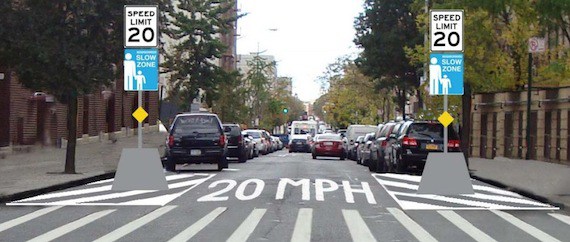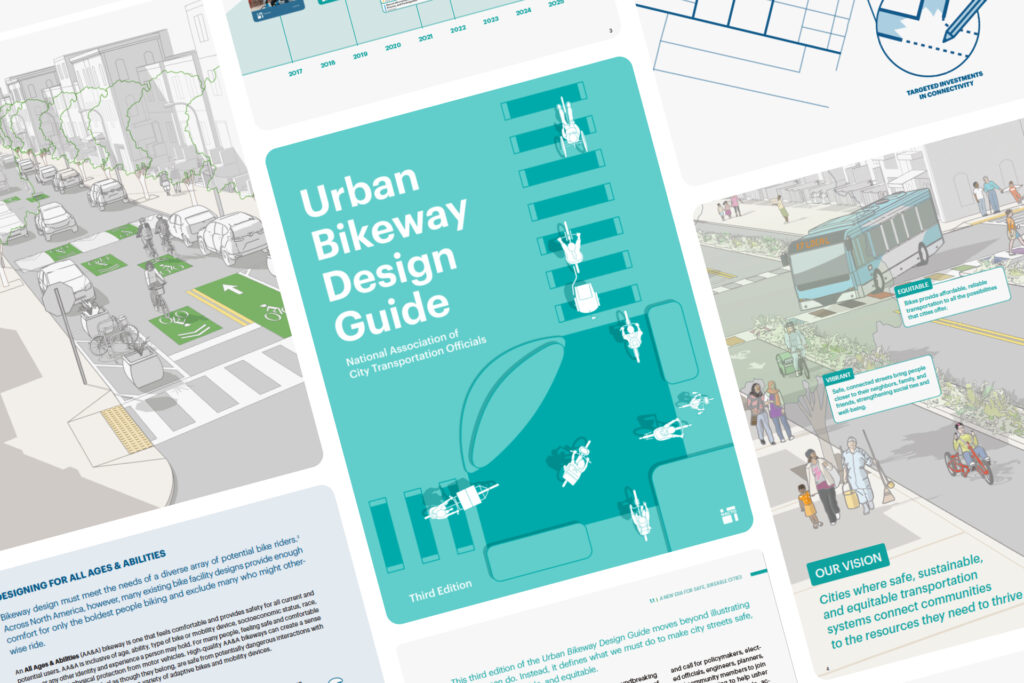Cities Urge States and Regulators to Act Quickly on NTSB Recommendations to Save Thousands of Lives Annually
For Immediate Release
August 15, 2017
Press contact:
Alexander Engel
[email protected]
646.324.2919
Cities across the U.S. lauded a report released today by the National Transportation Safety Board (NTSB), which concluded that excessive speed is one of the most significant causes of both crashes and fatalities on U.S. roadways. The report found that too little focus and attention has been paid to speed as a national traffic safety issue, given its outsize impact on the safety of city streets: over 10,000 people killed in speed-related collisions each year, on par with alcohol-related crashes.
The NTSB report recommends a sweeping overhaul of how speed is managed on U.S. streets, from the way speed limits are set, to how enforcement is carried out. NACTO strongly supports these essential state-level changes that will make city streets safer and more sustainable, especially for the most vulnerable street users: people walking and biking. In particular, NACTO applauds NTSB for its endorsement of comprehensive automated enforcement which is the most effective, equitable, and unbiased speed enforcement mechanism available today.
“U.S. streets have long been designed to promote speed at all costs, with deadly consequences,” said Linda Bailey, Executive Director of NACTO. “NTSB’s report is an urgent wake-up call for all walks of government to treat excessive speed as the deadly epidemic that it is. With safe street designs, automated enforcement practices, and policies that prioritize safety over speed, our streets can be modern, inviting places that make cities great places to be.”
“Los Angeles has committed to eliminating all traffic fatalities citywide by 2025,” said Seleta Reynolds, General Manager of the Los Angeles Department of Transportation and NACTO President. “We’ll only get there if we fix the root cause that turns a crash into a fatality: excessive, deadly speed.”
“Higher speeds result in more crashes, injuries, and deaths,” said Scott Kubly, Director of the Seattle Department of Transportation and NACTO Vice President. “That’s why the Seattle city council voted unanimously to lower the speed limit citywide, and why we continue to redesign streets to reduce speeds and help people walking, biking, and taking transit.”
“In New York City, our Vision Zero efforts have saved lives, with 23 percent fewer fatalities over the last three years,” said New York City Transportation Commissioner Polly Trottenberg. “We were successful in lowering our speed limit and installing speed cameras in 140 school zones. But we need more action at the State level to achieve Vision Zero. Backed with the results of the NTSB report, we call on the Federal government to lead the way by encouraging State governments to use and allow their localities to use the proven roadway safety tools and strategies that save lives.”
NTSB recommendations include:
- Modernizing how speed limits are set by using the safe system approach, which accounts for all road users – not just people in cars
- Amending state laws to allow cities to use automated speed enforcement, a proven strategy to increase driver compliance with posted speed limits
- Setting performance measures at the federal, state, and local level to track where speeding occurs, what measures are most effective at curbing it, and where progress is being made
- Increasing attention at all levels on speed as a major national safety priority
Speed kills. Excessive speed both increases the likelihood of a crash, and makes crashes more deadly when they occur. A pedestrian hit by a vehicle driven at 50mph has a 75% chance of dying; hit at 20mph that risk drops dramatically – to 7%. Despite this reality, speed limits have traditionally – and in many cases by law – been set by an outdated principle mandating that posted speed limits are set at the 85th percentile speed of observed free-flowing traffic, without questioning whether vehicles should be traveling at such high rates of speed to begin with. The NTSB rightly calls for stepping away from this misguided standard on multi-modal streets.
Many cities, such as Boston, Seattle, and New York City, are setting citywide speed limits, which create consistent expectations of safe speeds on all streets. The opposite of speed traps, consistently lower speeds across a city create a safer, more predictable environment for everyone. States must make this option available to more cities through legislation explicitly authorizing citywide speed limits and local speed control.
Setting speed limits is only part of the equation. Highly-visible and consistent enforcement is required to ensure that drivers adhere to speeds compatible with human life. The NTSB notes that more states ban or restrict automated speed enforcement than utilize it, despite it being the most equitable, data-driven, unbiased, and effective speed enforcement mechanism available today. States must urgently adopt NTSB’s recommendation to allow cities to enforce safe driving behavior on their streets.
Too little has historically been done to prevent the toll of statistically predictable and preventable speed-related injuries and deaths in cities across the U.S. While cities across the country redesign their streets with right-sized travel lanes, dedicated spaces for pedestrians and bicyclists, and increased protection for the most vulnerable road users throughout the street network, state and federal policies are playing catch-up. NTSB’s landmark study and recommendations should be an urgent call to action for better speed management on our streets. Thousands of lives depend on it.
Read the full NTSB Study and Recommendations:
https://www.ntsb.gov/safety/safety-studies/Pages/SS1701.aspx
###
About the National Association of City Transportation Officials (NACTO)
NACTO is an association of over 50 major North American cities formed to exchange transportation ideas, insights, and practices and cooperatively approach national transportation issues. The organization’s mission is to build cities as places for people, with safe, sustainable, accessible, and equitable transportation choices that support a strong economy and vibrant quality of life.



